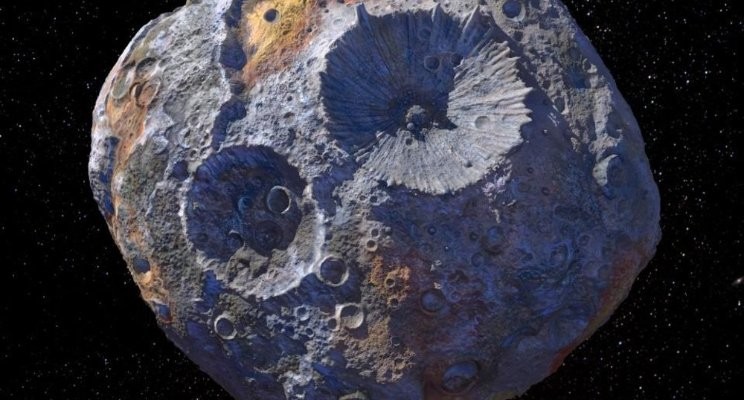
News & Resources
How Studying a Metal Asteroid Can Rock Our World

In 2023, a spacecraft will head to 16 Psyche, a shiny, spherical asteroid the size of Massachusetts, comprised of nickel and iron and believed to be the core of a small planet. It will take seven years to reach this improbable metal ball—some 186 million miles from Earth—which likely lost its rocky outer layers following a series of violent collisions billions of years ago.
This remarkable NASA-backed mission, developed and led by Arizona State University, is the latest expression of our commitment to expand human knowledge of our solar system and the universe. This journey represents an opportunity to advance our understanding of planetary science, but also enhance our ability to find and mine new resources beyond planet Earth.
Confirming the existence of water, organics and valuable minerals means that asteroids may provide rocket fuel and life support for future manned space missions, as well as provide fresh impetus to accelerate commercial ventures. This research is particularly exciting because it represents a growing commitment to public-private partnerships that can unlock new worlds of discovery and expand our notions of what’s possible.
It’s always struck me that space exploration is one of the single most important things we can do as a species. Exploration opens our lens to address the central questions of who we are and what we are. It also accelerates a process to think beyond and live beyond the constraints of our planet.
While it is hard to fully grasp this yet, it’s as if we are all living in a rural, isolated village that’s part of a much larger complex of physical and possibly biological systems. If we terminate our singular co-dependency with Earth, how might this alter the fate of humanity?
These are big, potentially world-shattering questions. But we can begin to answer them with actual research and thinking that lead us to create new institutions, technologies and pathways. Achieving this requires stepping outside of traditional disciplinary constructs to ask the right questions and avoid missing what the problems actually are.
This is not an abstraction: Schools that are transdisciplinary—specifically constructed to bring together a wide range of thinkers and doers—have the ability to ask questions and find solutions that are not defined by or limited by academic silos.
Our School for Earth and Space Exploration is one of these knowledge-producing enterprises, creating partnerships and seeking answers to some of the great unknowns about the universe and our own planet. By leading the Psyche mission with NASA, it underscores our desire to help create a future that expands the capability of humans to generate wealth and understanding. We are just at the beginning of a new era that will extend the horizon of available resources, both intellectual and material.
The estimated value of the rare metals on Psyche has ranged widely—from billions to trillions to quadrillions of dollars. To put this in perspective, the GDP for the world is estimated to be about $80 trillion this year. Suffice to say, this robotic mission will be more about studying the asteroid’s composition and topography than mining a world we do not yet understand.
But it should reinforce the promise that the more we explore the world beyond our village, the more we will add to our wealth of knowledge, discover new opportunities, develop new capabilities and more fully realize what it means to be human.